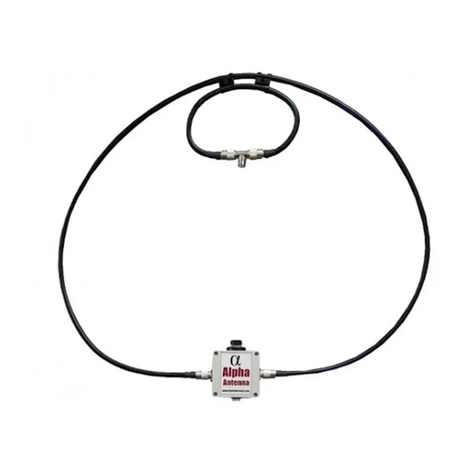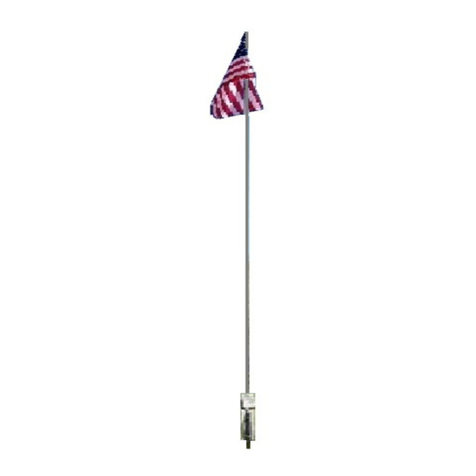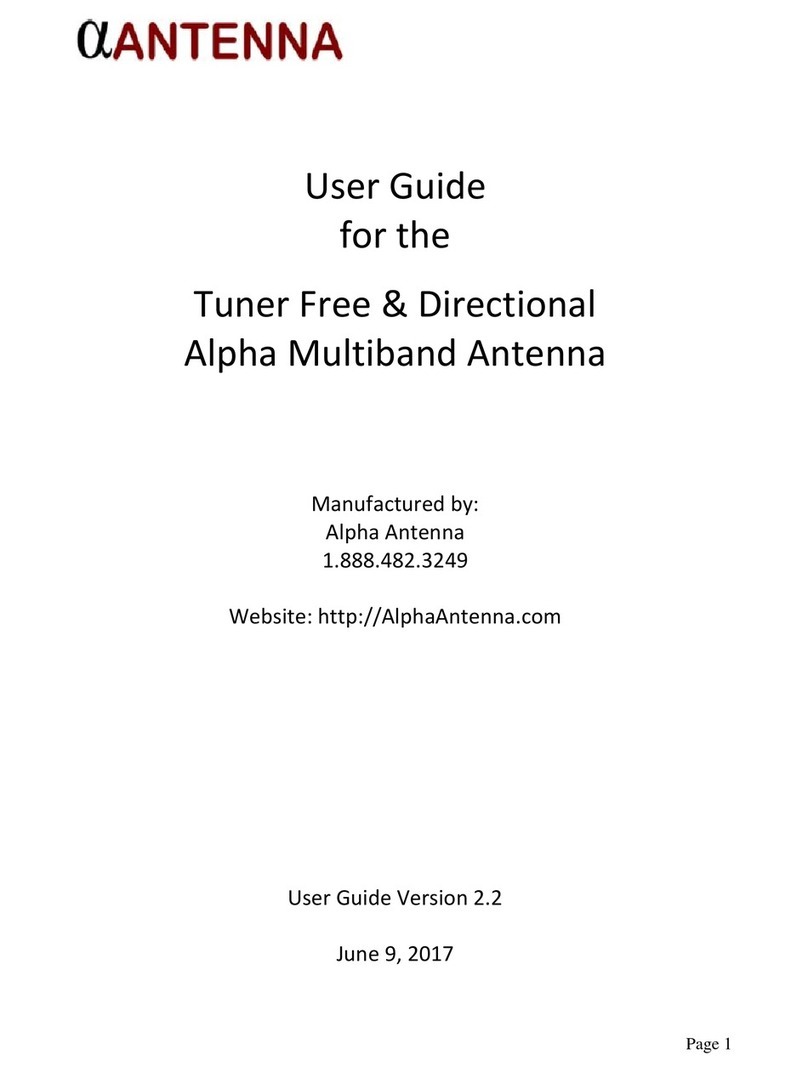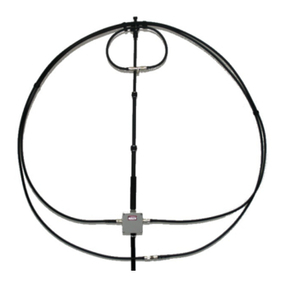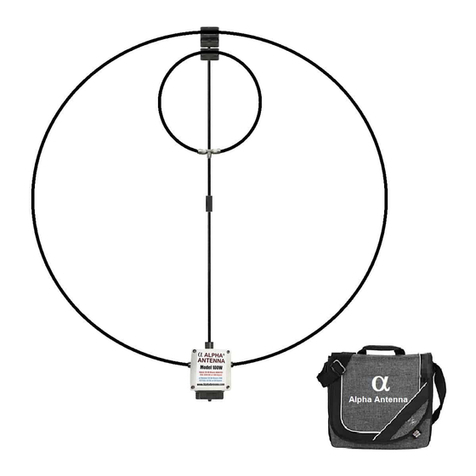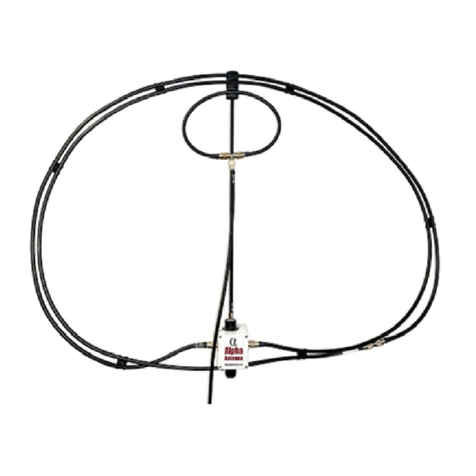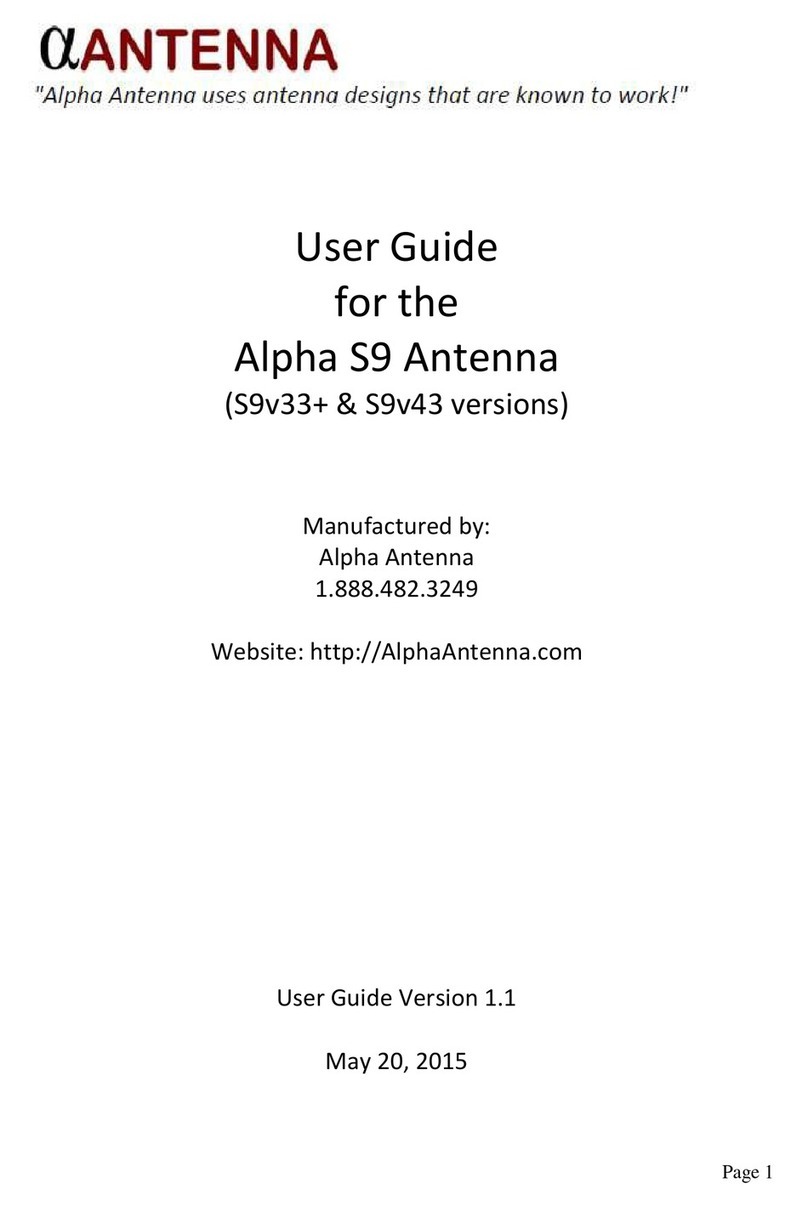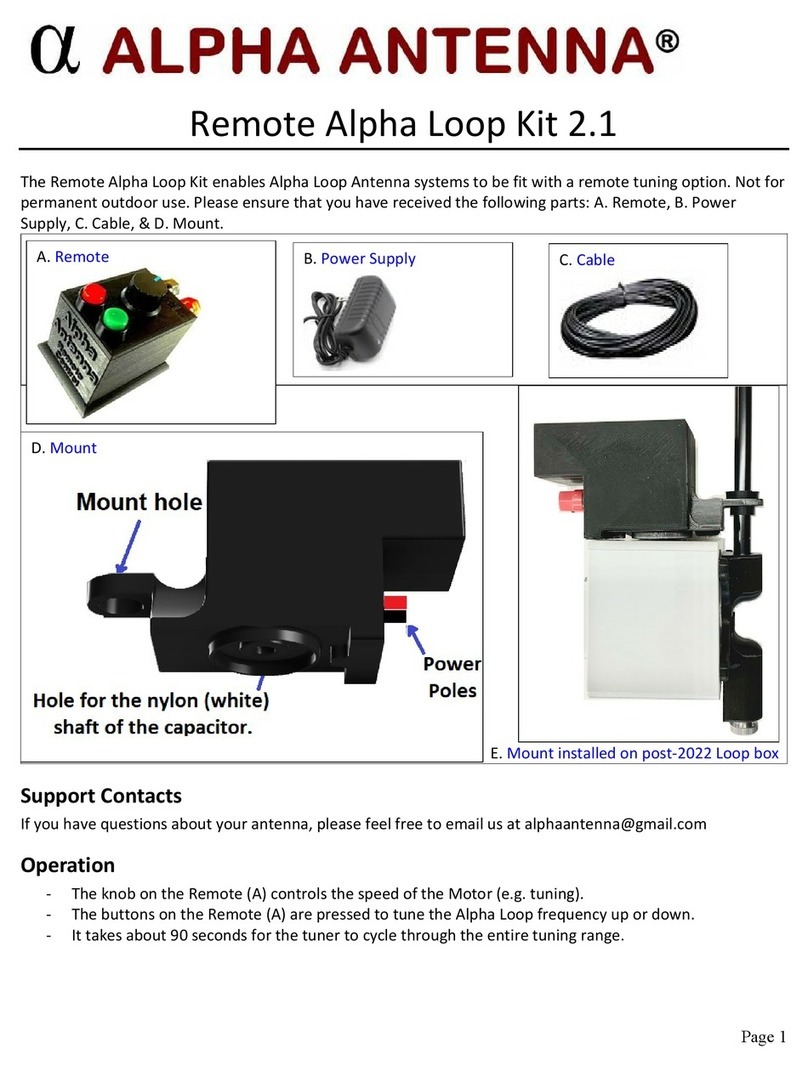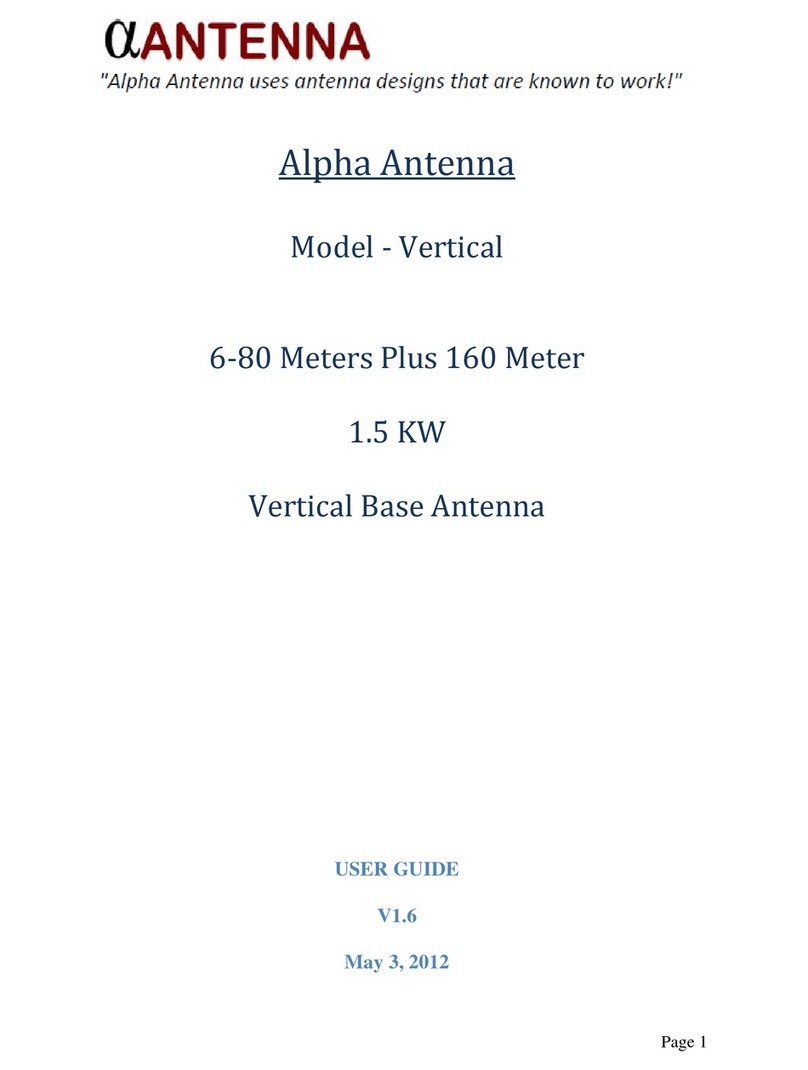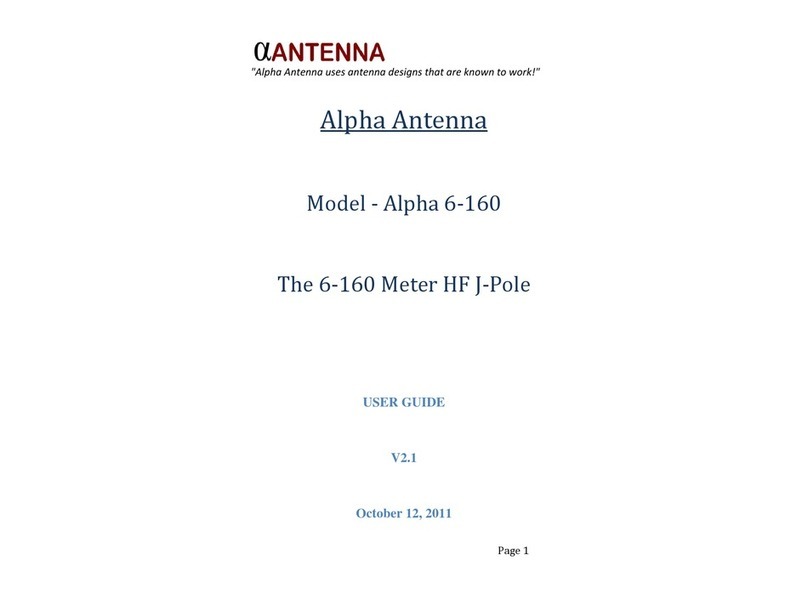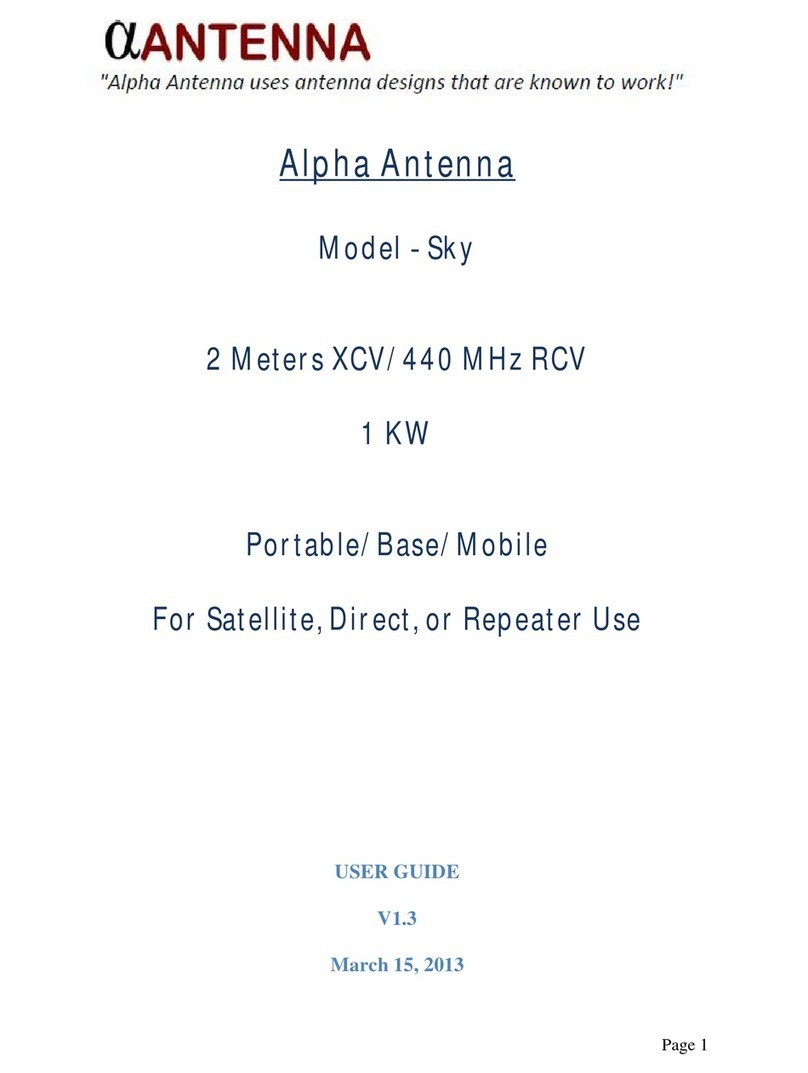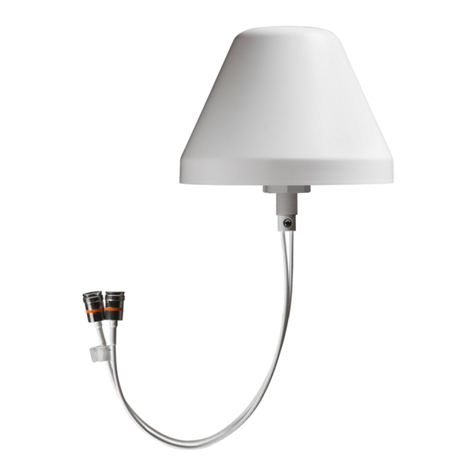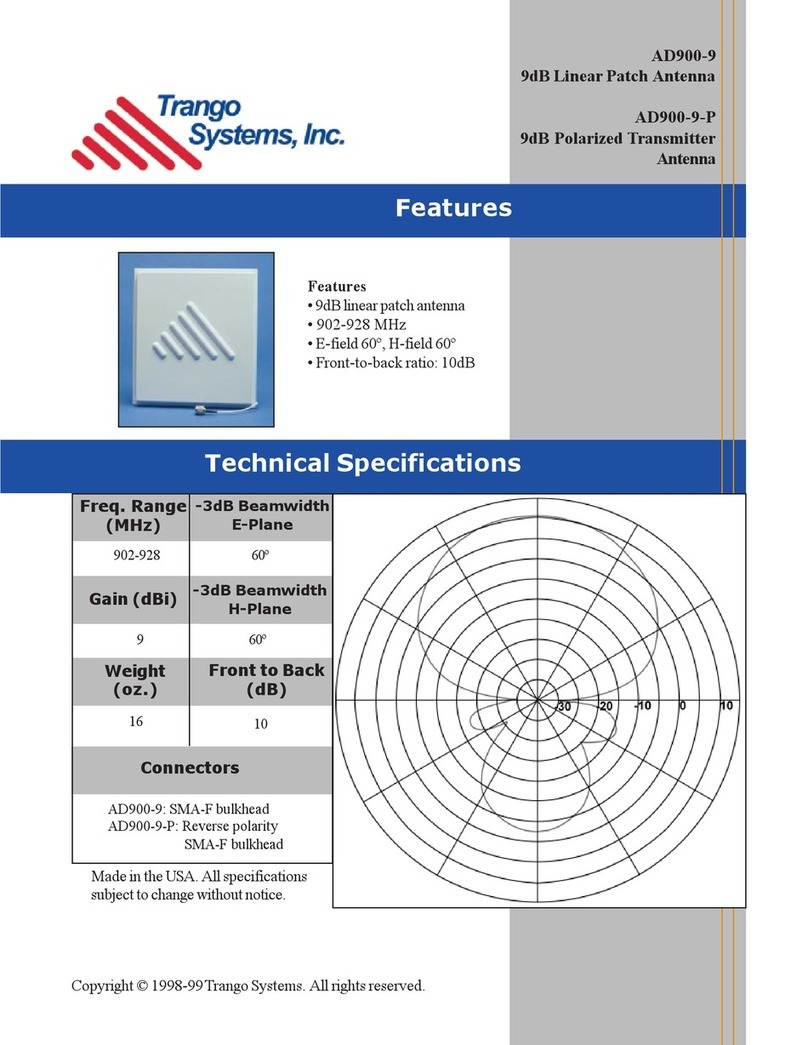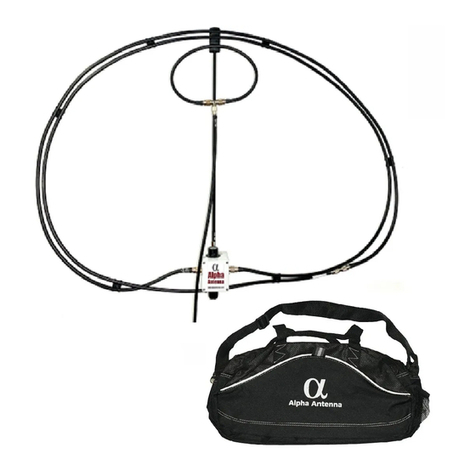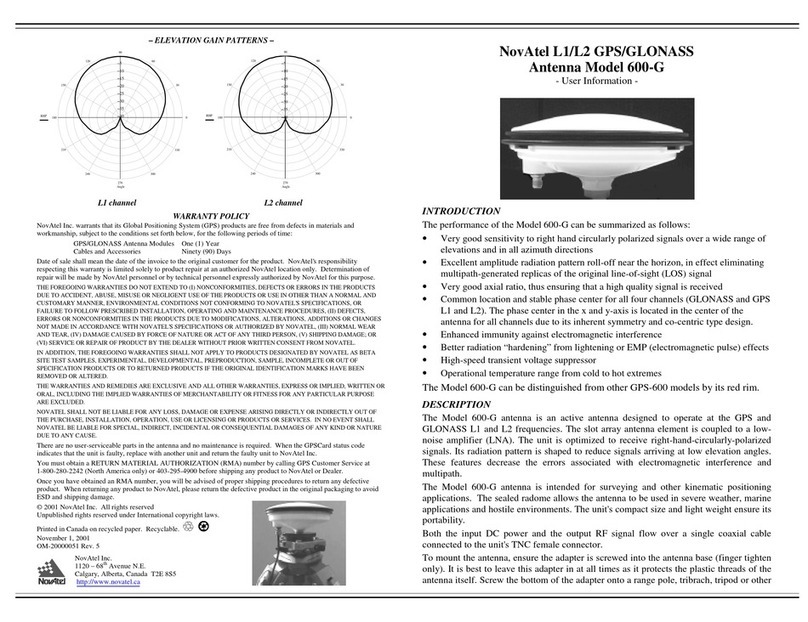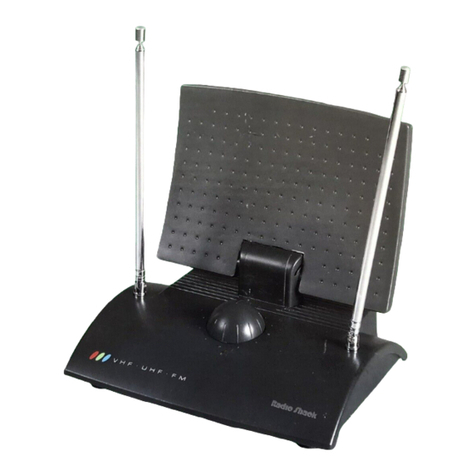
Page 5
SECTION 1 – Concept of Operation
The ProMaster is a balanced limited space (permanent base or transportable) antenna that maximizes
effective radiated power (ERP) while maintaining an acceptable SWR.
a) The system will cover 3.5-29.7 MHz when deployed in the default configuration using 1 NVIS, 1
Vertical and 1 Grounded counterpoise element.
b) For an omnidirectional signal pattern, to improve low band performance, and to enhance NVIS
characteristics from 1.8 to 30 MHz, four optional 35 foot NVIS elements can be installed in place of
the single 25 foot NVIS element.
c) Alternatively, these optional four (or even 3 of the 4) 35 foot elements can be used as counterpoise
elements. This configuration will lower the take-off angle of the radiated signals on 7-29.7MHz,
which will thereby enhance the DX characteristics.
DETAILS
Many short-range HF communication system use vertical elements that are not directional. With these
antennas, communications are achieved on very short ranges by ground-wave (surface-wave
propagation), and longer paths are achieved by sky-wave propagation. An inherent characteristic of radio-
wave propagation that is missing when vertical antennas are used is the zone of silence (skip zone)
between the point where the ground-wave signal becomes unusable and where the sky-wave signal starts
to become usable (Ref. Radio Amateur’s Handbook, Ionospheric Propagation, most editions). Depending
upon terrain, ground conductivity, operating frequency, noise levels, etc., ground-wave signals are usable
up to about 70 miles over average soil. Also, minimum distances for sky-wave paths when using vertical
elements are generally 200 miles (E-layer) during the day and 400 miles (F-layer) at night.
While the skip zone, described above, severely limits the usefulness of vertical antennas for short-range
communications, conditions become even worse for the skip zone in an adverse environment, such as a
hilly or forest-type terrain. This occurs because of the restricted range for ground-wave signals in these
environments.
Additional considerations should include soil conductivity, where the soil conductivity decreases or as the
foliage increases, the signal strength at a distance decreases rapidly. The strongest practical signals
occur over seawater. The important consideration for signal strength is not the value of signal level, but
the signal-to-noise ratio, which is an important characteristic of this antenna. Good ground-wave
communications are expected at 25 miles at any time of the day for good ground conditions, and the
range may be as much as 100 miles for a couple of hours at midday. However, if the environment is
dense forest instead of good ground, the maximum ground-wave communication range may be 1 mile or
less.
From the above discussion, it is clear that a skip zone is present when vertical antennas are used. The
extent of the skip zone is dependent upon soil conditions and the surrounding physical environment. For
average conditions, the skip zone lies between 70 and 200/300 miles; however, in extreme environments,
it may include the range from 1 to 200/300 miles. The skip zone is of a very critical range for most tactical
communication systems. Most tactical requirements necessitate good communications in the 0 to 300-
mile range. If HF communications are to be effective in this range, different antennas and propagation
modes are necessary.
The solution to the short-range communication problem is the use of sky-wave instead of ground-wave
propagation on the short paths. This requires radiation patterns from the antenna at very high elevation
angles NVIS (near vertical incidence sky-wave). This is accomplished by deploying the vertical element
